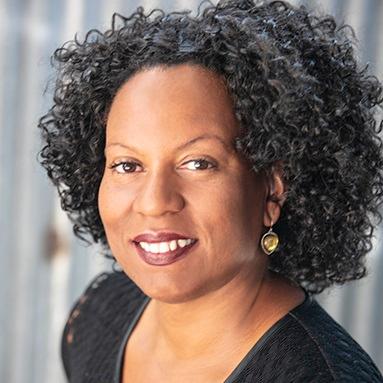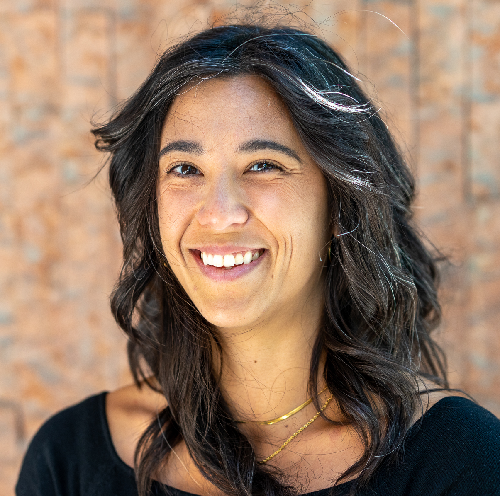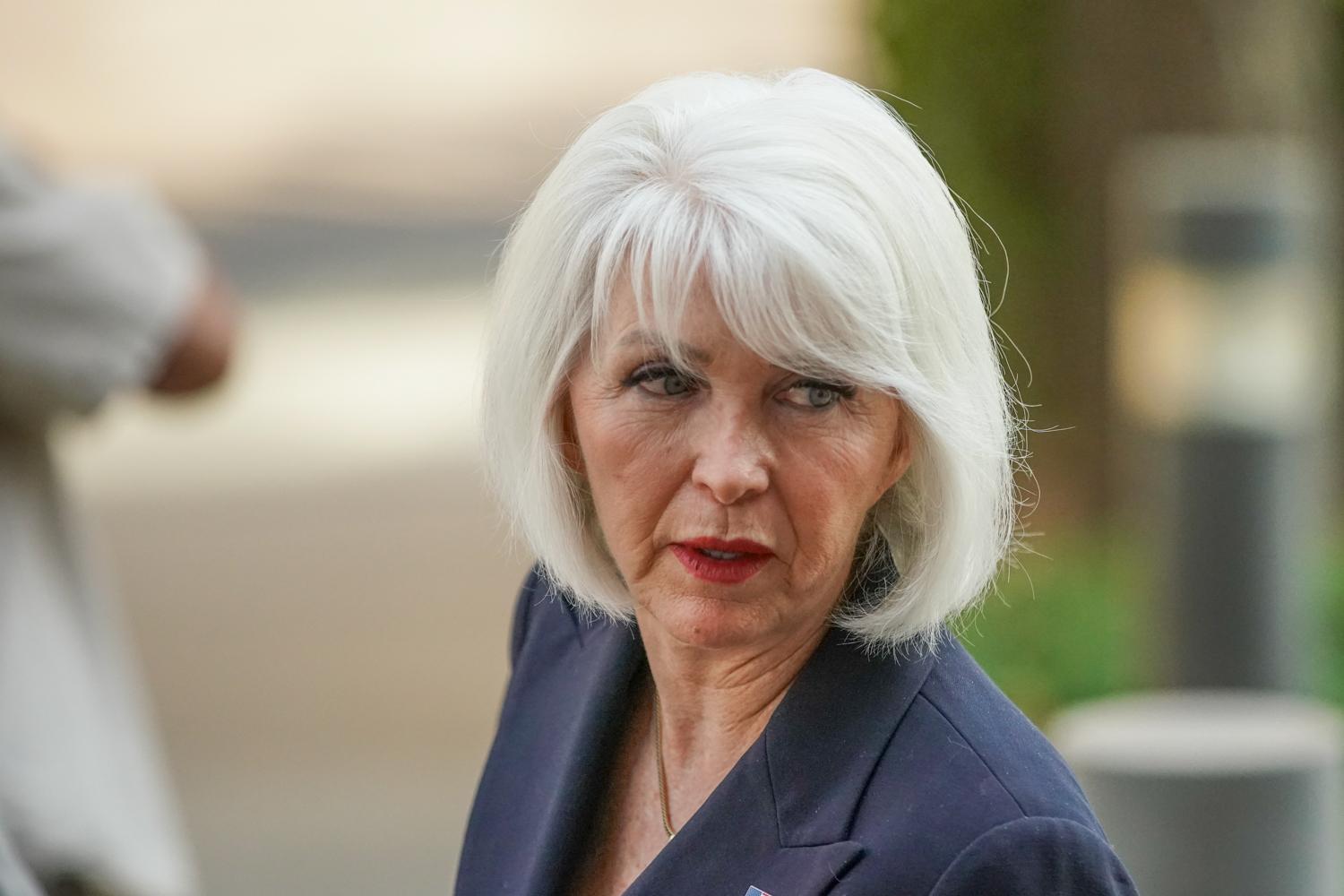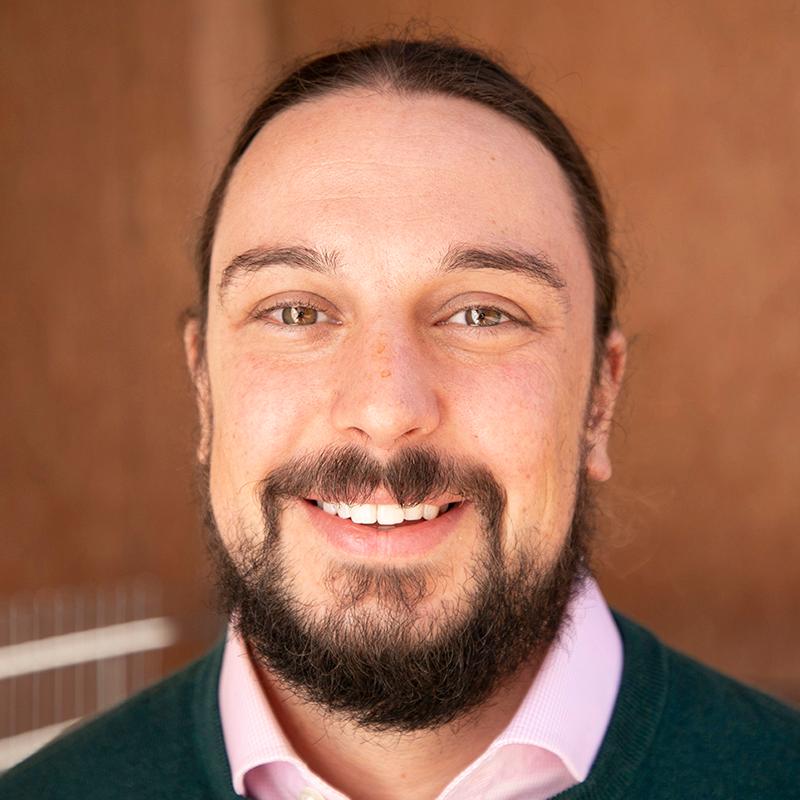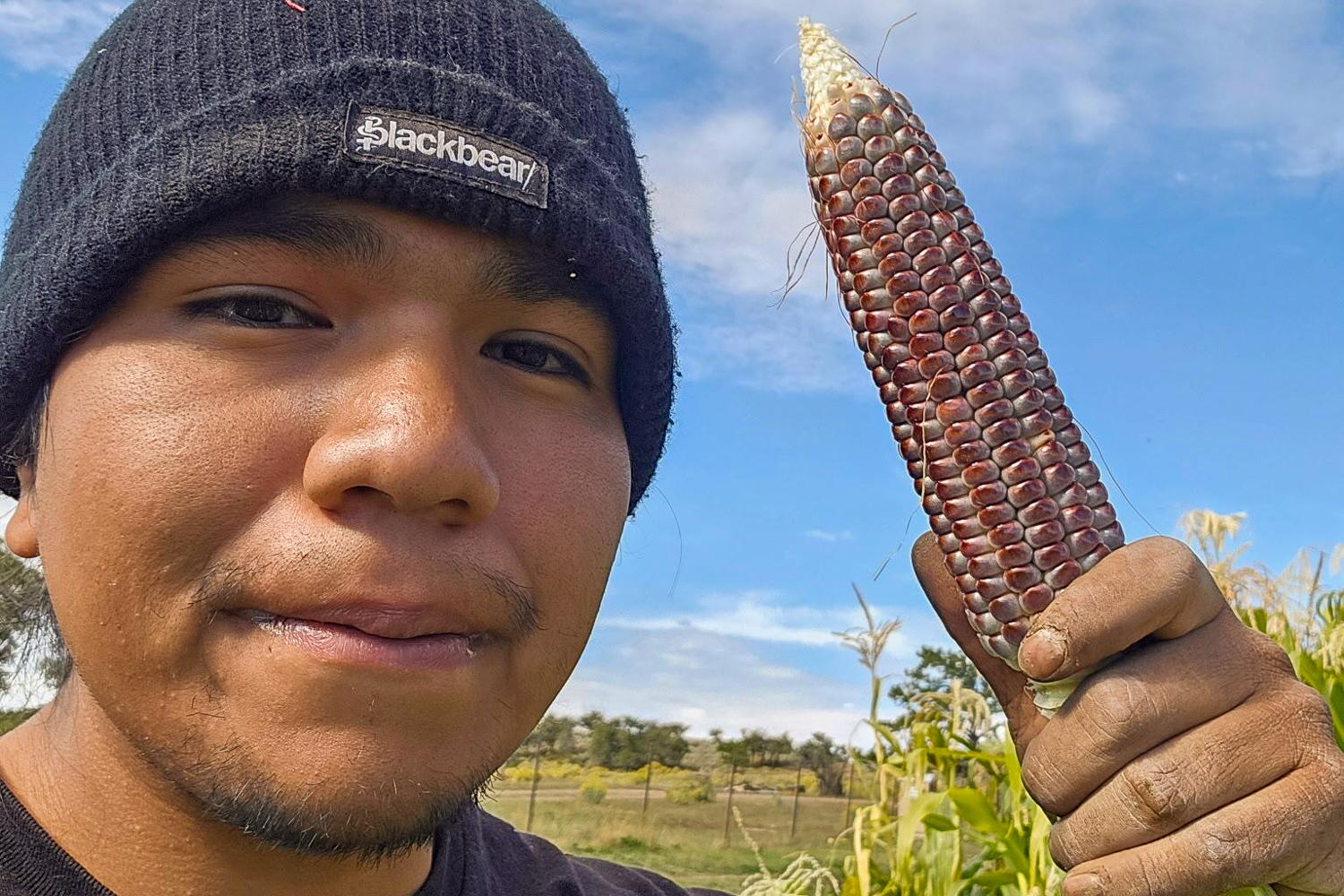
In Hesperus, on land that was once an army post — then a federal Indian boarding school — farming trainees are learning to grow fresh produce. During a visit to the grounds on a sunny fall day, zucchinis were erupting from their plants, some of them as big as bowling pins. The wind rustled through corn husks, and the ground crackled when dried leaves were stepped on, all sounds of vibrant farm growth and energy.
“We have three acres of growing space up here, and we grow all different kinds of things: carrots, green beans, snap peas,” said Emily Bell, farm training coordinator for the five-month-long Farmer-In-Training program at the Old Fort in Hesperus. “This is our potato plot, and then this is our blue corn plot,” she said of a vast space that also had a few tractors and pieces of farming machinery, as well as greenhouses to process smaller crops.
The program starts every May and runs through October, since it began in 2012. This year, it had 12 participants.
“We are 7,600 feet here, a little higher than Durango. It can be quite challenging – we get all different kinds of weather variability — so we really try to focus on learning techniques that set future farmers up for success,” Bell said.
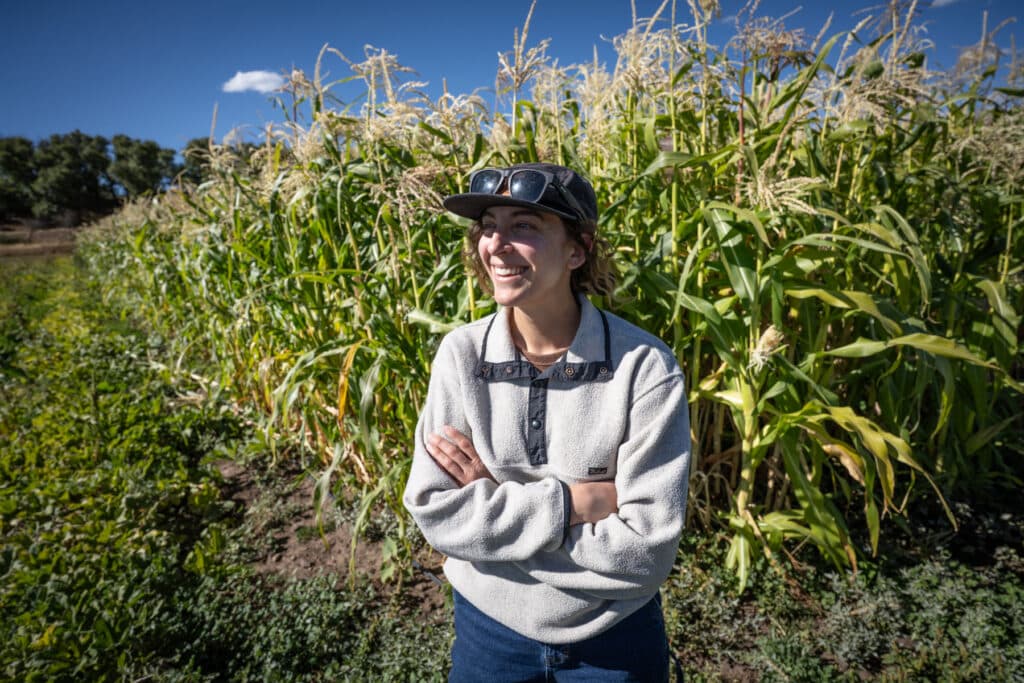
Some participants are Fort Lewis College students, while others are farming enthusiasts who travel there and live onsite, such as TeAndre McLane, 25, who is Western Shoshone originally from Nevada and had been living with his father in New Mexico. He was working as a caregiver when he found out about the program last year and applied, interviewed and got accepted. He and about 10 others just completed the program.
“We went out to the education garden here,” McLane explained during a recent interview, “starting small with the cilantro seeds, the carrot seeds, the lettuce seeds … we would just learn about the spacing, how deep to plant the seed as well. I think it only took maybe a month and a half to really see that cilantro really start growing, like really get ready for harvest.”
Besides learning in the classroom yurt and on the large growing field, participants also stocked a small, unstaffed general store with a refrigerator and shelves bursting with produce that has been grown on-site. People pay using an honor system, leaving cash in a small safe.
Robust plant growth, an honor system and excited people gaining useful skills are what is seen there today — but the history of that land is quite different, and its documented use was much less rosy.
History of the Land
Almost 150 years ago, in 1878, the first Fort Lewis army post went up initially in Pagosa Springs, about an hour away from Hesperus. It was relocated to Hesperus two years later, in 1880. Just over a decade later, it was decommissioned in 1891, according to the Fort Lewis College website.
The next year, in 1892, it was converted into the off-reservation, federally run Fort Lewis Indian Boarding School, which stayed open for almost two decades, closing around 1911. About 1,100 students went through the school, with schedules arranged so half the day was spent on academics and the other half on vocational skills, with the Native children never being equipped to use the academic skills they were learning.
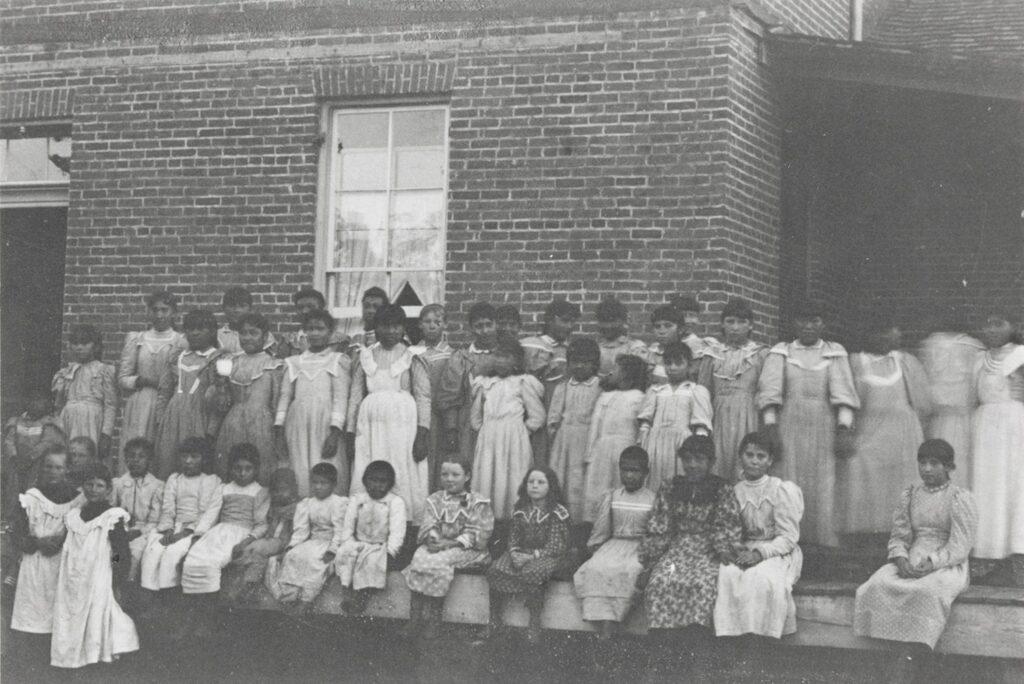
“The schools depended on the Native attendees for facilities maintenance; construction of new buildings, irrigation, fences, and other infrastructure; laundry and sewing; and cooking and cleaning, among other activities. These vocational skills were the primary focus of the curriculum. It was never expected or encouraged that Native children would enter mainstream society to compete economically with their white peers. Instead, they were meant to compete with other marginalized groups as laborers and domestic servants,” according to a report History Colorado completed in 2023.
The report also indicated that schools were partially funded by land sales — of Native American land specifically. “An additional insult was that the boarding school system was largely funded through the extraction and sale of land from various reservations and eventually the allotment system,” according to the report.
It also found that a school superintendent who served for about half the time the school was open was forced to leave after a public investigation into his physical and sexual abuse of students and staff, there was reported in the Denver Post in 1903.
Students quit, started fires and lived in dire conditions, suffering different health issues, until the school finally closed, leaving students traumatized and often dealing with the aftermath of the boarding school experience for the rest of their lives.
Present day
Creating the farm, like offering free tuition to Native students, is a way Fort Lewis College holds itself accountable for the harm caused to Indigenous people.
“The Old Fort and Fort Lewis College are committed to reconciling their history as a federal Indian Boarding School,” the farming program’s website states in its land acknowledgement portion.
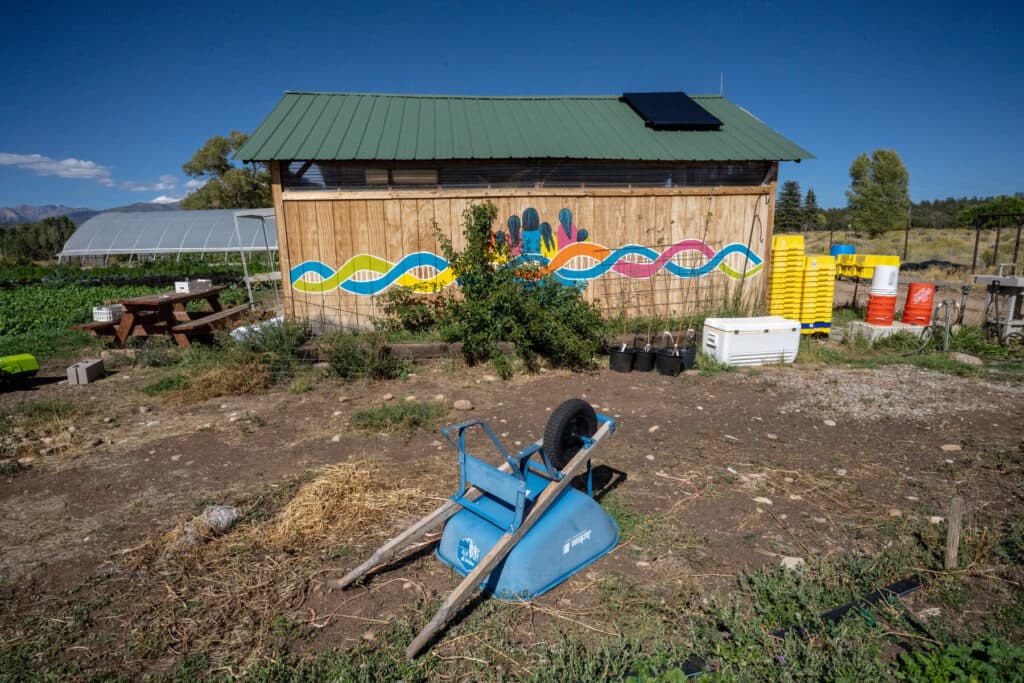
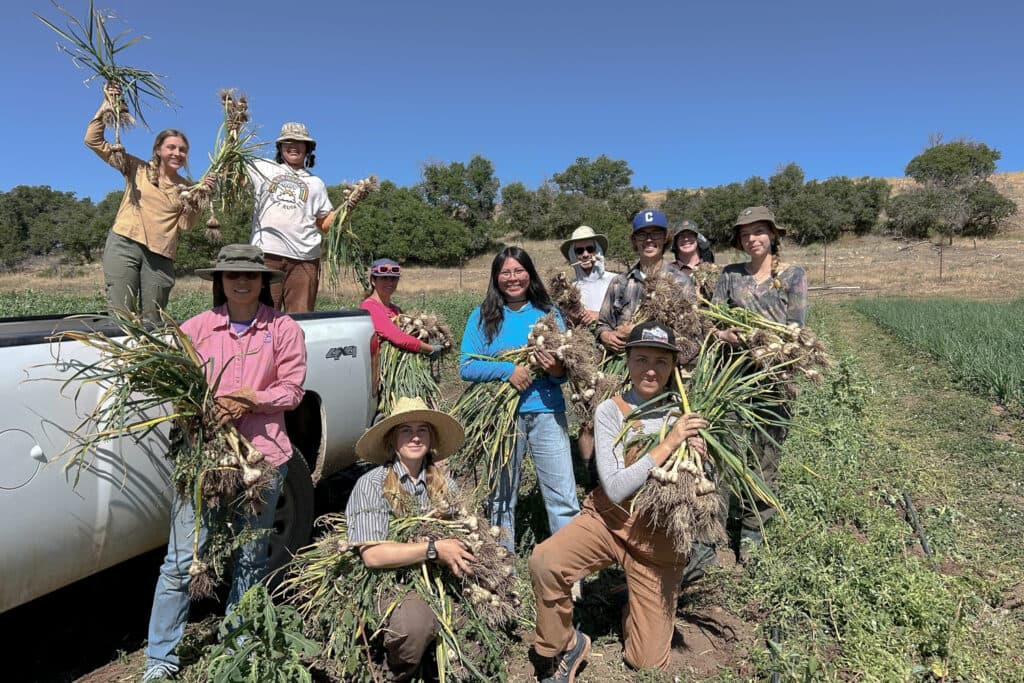
Another way the program is reconciliation-focused is how it uses the blue corn flour it creates: it donates it, placing free bags in on-campus food pantries or giving it for free to Native farmers. Turning blue corn into flour takes place in the yurt.
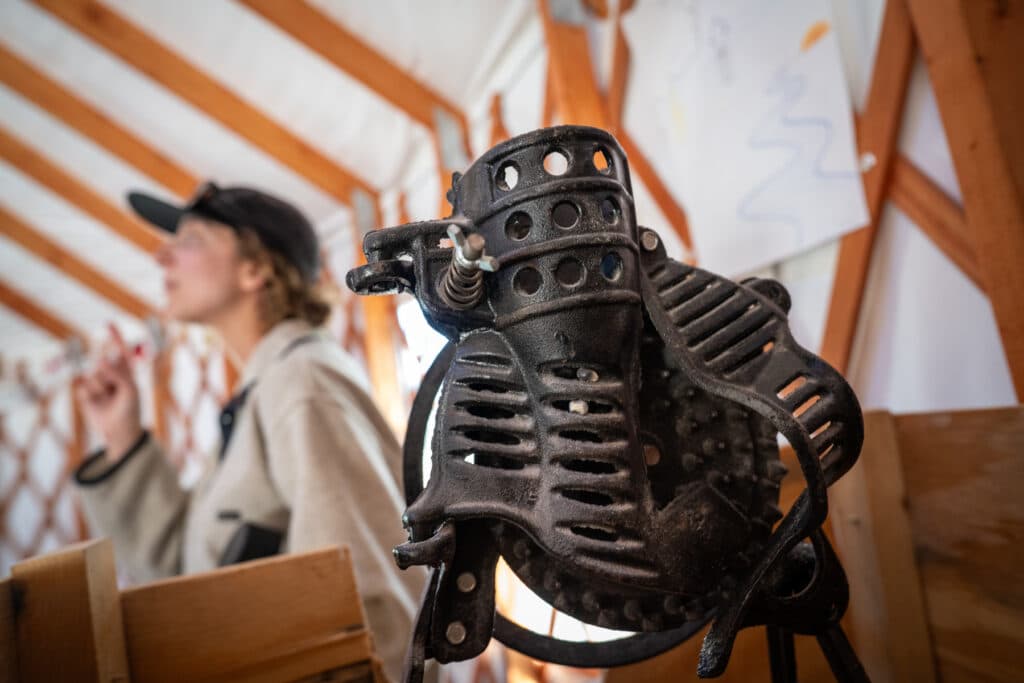

“These are two of the machinery that we use to process our blue corn,” she said, pointing at two metal machines that rip off kernels from corn-on-the-cob. “Corn comes in here,” she said, indicating the opening of one machine, “which is how we get the kernels off, and then we run it through our grinder to make it into flour.”
McLane, who was bagging some blue corn flour even after the program ended a few weeks ago, said he was familiar with the history of the land, hearing stories from his uncles, and learned more about Native students’ plight while in residence. One day, he decided to show respect to the students who didn’t get it when they boarded on the same land.
“We had a little campfire, me and the roommates,” he said. “I put some cedar down. I utilized some medicine like that and was kind of having a good thought and kind of made an expression, a prayer, if you will … to recognize and acknowledge the people that are here and they're still here, and what happened here. So, I just kind of went about it like that in a respectful way. That's what I did — I paid tribute to the spirits, to whatever is still wandering around.”
Participants say the program has been useful in connecting them to other farmers, and feeding an internal hunger for using food as a way to improve physical and emotional health while bonding with new communities.
A key takeaway for Jessica Craddock, one of McLane’s classmates, was “a close personal connection with the food and the labor and the seasons and the culture behind all of this food, and it became part of my heart,” said Craddock. “It already was, but it got in there deeper … now I have a whole network of people that I can go to that’s pretty large, and I feel like I could ask a lot of people for help or go volunteer with them, and growing that community will really help everyone.”
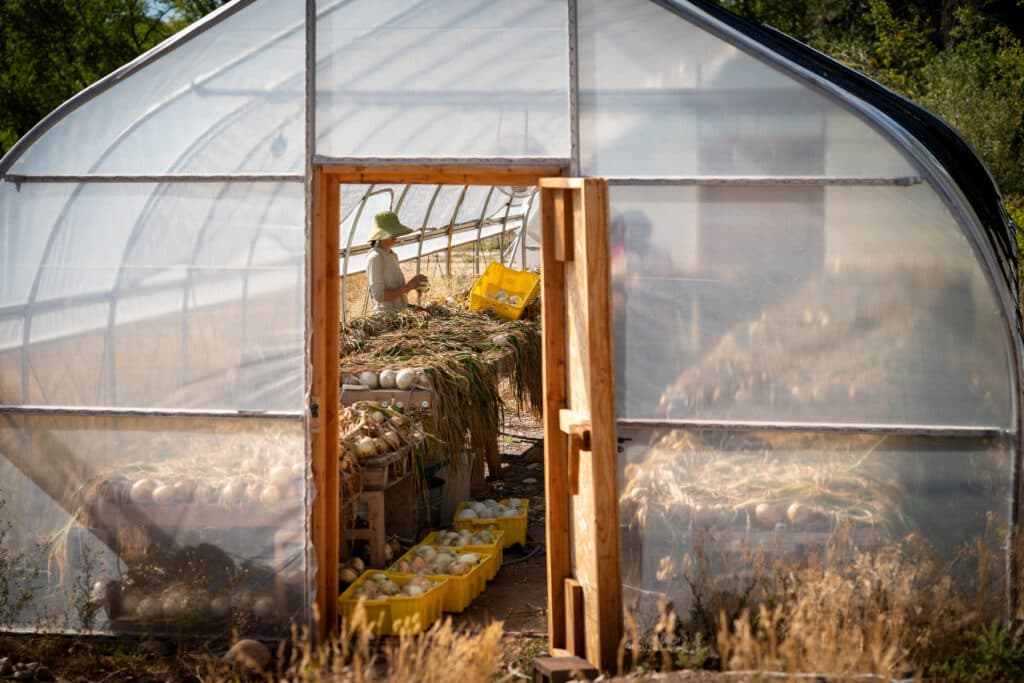
Now that he’s had a chance to honor his Native ancestors, and since he has just completed the program, McLane may stick around for a second year as a field assistant. He said he wants to create something like it for his Shoshone family and relatives.
“We don't have a community garden like this — if we have free food, you know, we could take it down the road to our grandparents or to our cousins, or maybe a newborn baby needs some fresh food,” he said.
He said he’s not so much into the business side of things, but enjoyed his involvement more for the benefits to him as a Type-2 diabetic, and to his relatives, who have to drive about 45 minutes to get fresh produce.
“I'm not trying to make a living off of it … Just really sharing it with my people,” he said. “I'm just living, I'm moving, I'm also eating this food that we grow … the color is a little bit different than store-bought food. So yeah, I would say the food tastes a little bit more fresher.”
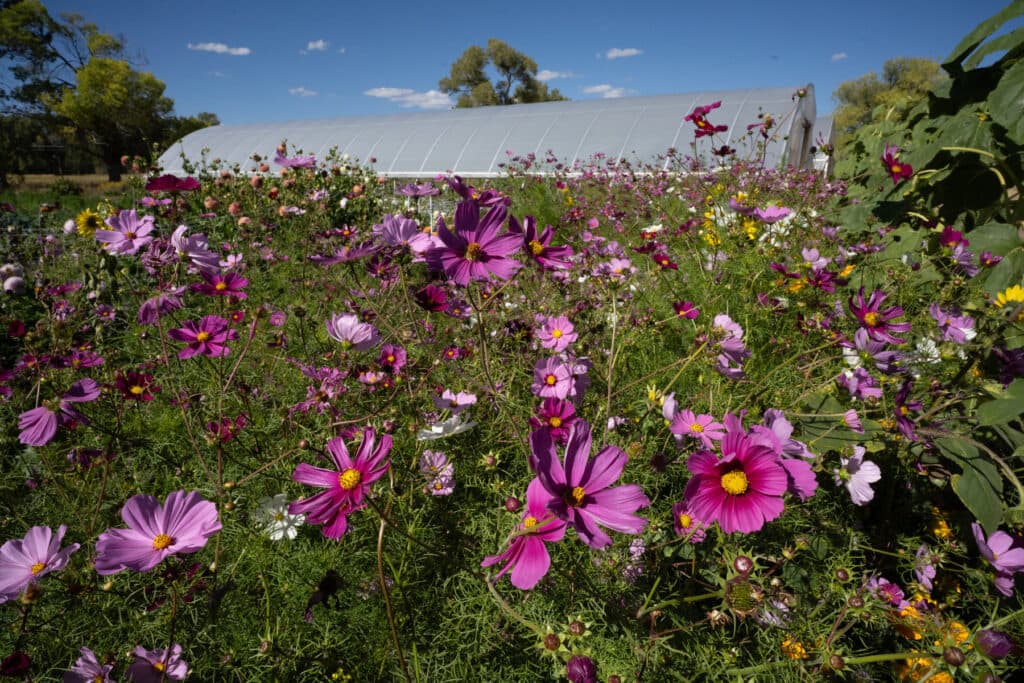
In the coming months, program coordinator Bell and the rest of the team will begin interviewing people for the new class of farming trainees, which will start in May 2026. And if they continue to get grant funding through the USDA, they might be able to grow from 12 participants each year to 18.
McLane said he hopes Native participation grows — only about a quarter of the participants who were in his cohort were Indigenous.
“It's like, wow, it'd be nice to see them up here at the Old Fort, you know, 'cause they represent more than just themselves.”
